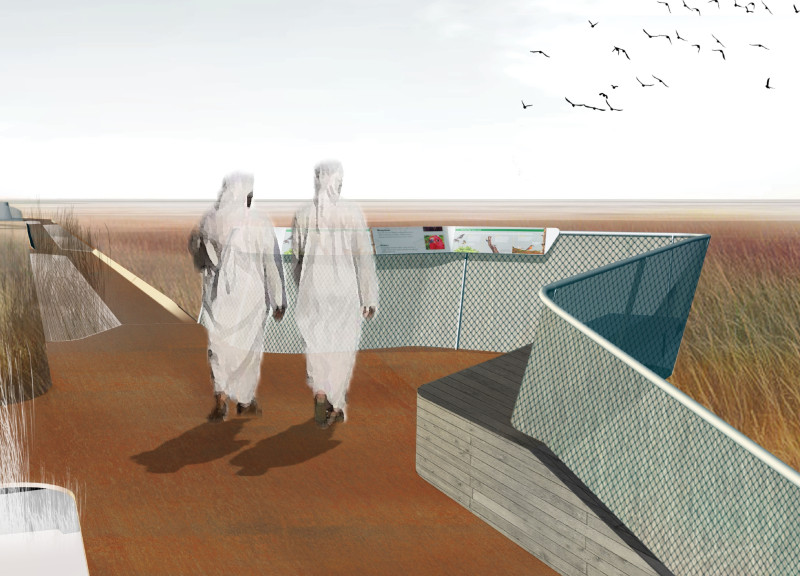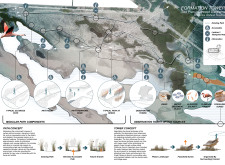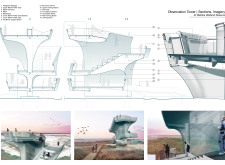5 key facts about this project
The project embodies a thoughtful approach to architecture by prioritizing visitor experience and environmental sensitivity. The design includes accessible pathways that navigate through various terrains with minimal ecological disruption. Elevated walkways lead visitors to significant observation points, allowing for bird watching and interaction with the diverse flora and fauna present in the wetlands.
The tower itself references the geological features of the area, mimicking the forms of fossilized dunes to create a visually responsive structure. Its vertical orientation encourages visitors to experience the wetlands from varying heights, offering new perspectives on the landscape below. The design employs a range of materials, namely weathering steel, wood, and copper. These materials are selected for their durability and aesthetic qualities while allowing the structure to blend into the environment over time. Weathering steel provides a robust exterior that naturally ages, while wood adds warmth and organic appeal. Copper cladding introduces a dynamic quality as it changes with exposure, fostering a visual connection to the surrounding elements.
The Formation Tower sets itself apart by its commitment to sustainability and accessibility. The modular design of the pathways can adjust to the natural terrain, ensuring that the ecological balance is maintained. The integration of educational installations at key nodes along the pathways enhances visitor knowledge of the wetland ecosystem, promoting conservation awareness.
Another notable aspect of the project is its focus on sensory experience. The design encourages exploration through varying elevations and viewpoints, facilitating deeper engagement with the landscape. It effectively marries architecture with the environment, making an architectural statement that respects and celebrates the local ecosystem.
To explore the architectural plans, sections, and design ideas of the Formation Tower further, interested readers are encouraged to review the project presentation for comprehensive insights into its design and functionality.


























